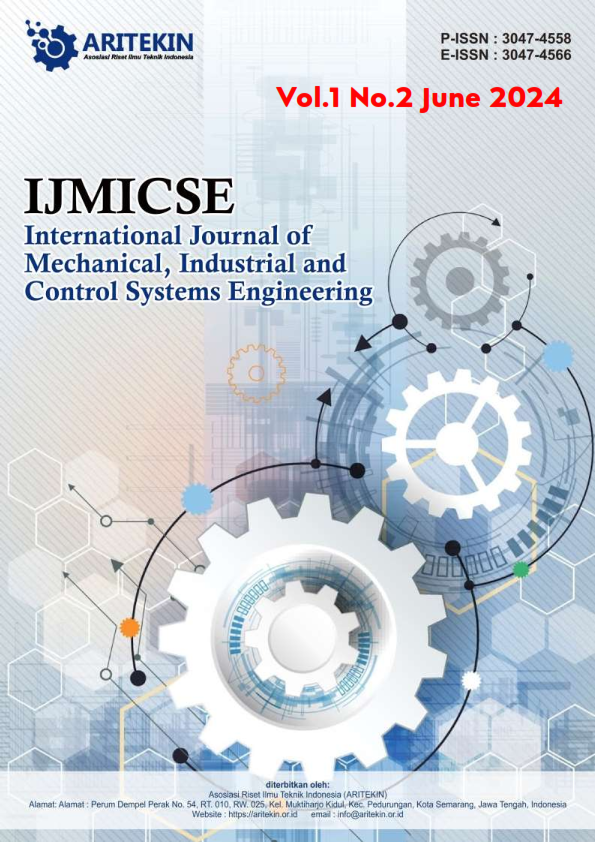Analysis Of Labor Qualifications Using The Resource Leveling Method On The Main Structure Work Of Multi-Story Buildings
DOI:
https://doi.org/10.61132/ijmicse.v1i2.21Keywords:
Construction Project, Labor, Resource LevelingAbstract
Construction projects are related to infrastructure development in Indonesia, which is an important foundation for economic growth by supporting mobility, trade, and connectivity between regions. Infrastructure development also supports the utilization of labor resources in Indonesia. This research aims to analyze the availability of labor in a construction project. The Resource Leveling method is used to level the labor needs in the project. The results showed that there was an allocation of labor that exceeded the maximum daily availability before equalization. The initial allocation based on qualifications showed that the maximum number of workers consisted of 2 foremen, 1 head carpenter, 1 head ironworker, 1 head mason, 5 carpenters, 5 ironworkers, 1 mason, and 13 workers. After equalizing the workforce, the maximum number of workers required is 1 foreman, 1 head carpenter, 1 head ironworker, 1 head mason, 4 carpenters, 4 ironworkers, 1 mason, and 13 workers. This research emphasizes the importance of workforce equalization to avoid over-allocation and ensure efficiency in construction projects.
References
Zainullah, A., Suharyanto, A., & Budio, S. P. (2012). Pengaruh upah, kemampuan dan pengalaman kerja terhadap kinerja pekerja pelaksanaan bekisting pada pekerjaan beton. Jurnal Teknik Sipil, 6(2).
Ali, M. M., Hariyati, T., Pratiwi, M. Y., & Afifah, S. (2022). Metodologi penelitian kuantitatif dan penerapannya dalam penelitian. Education Journal, 2(2), 1–6. https://ojs.stai-ibnurusyd.ac.id/index.php/jpib/article/view/86
Arfadri, M., Revo, L., Inkiriwang, L., & Mangare, J. B. (2022). Perataan sumber daya tenaga kerja pada proyek konstruksi bangunan gedung menggunakan Microsoft Project (Studi kasus pembangunan lanjutan aula dan gedung RKB SMA Negeri 1 Kawangkoan). Jurnal Sipil Statik, 10(1), 47–56. https://ejournal.unsrat.ac.id/v3/index.php/jss/article/view/43276
Christy, J., Mandey, N., Tjakra, J., Arsjad, T., Malingkas, G. Y., Teknik, F., Teknik, J., Universitas, S., & Ratulangi, S. (2013). Perataan tenaga kerja menggunakan Microsoft. Jurnal Sipil Statik, 1(10), 671–677. https://ejournal.unsrat.ac.id/v3/index.php/jss/article/view/2900
Haryadi, B. (2010). Kompetensi tenaga kerja konstruksi dalam menghadapi era liberalisasi. Inersia, 6(1), 33–40. https://journal.uny.ac.id/index.php/inersia/article/download/10572/8056
Kyriklidis, C., & Dounias, G. (2023). A ship-construction dataset for resource leveling optimization in large project management problems. Data in Brief, 49, 109340. https://doi.org/10.1016/j.dib.2023.109340
Minarosi, A., Putra, I., & Nauli, A. (2021). Analisa resource leveling tenaga kerja (Studi kasus: Proyek JLLB tahap 2). Jurnal "MITSU" Media Informasi Teknik Sipil, 9(1), 1–8. https://doi.org/10.24929/ft.v11i1.2077
Richards, J. (2023). “Schooling without learning is a terrible waste of precious resources and of human potential” – The South Asian paradox. International Journal of Educational Development, 103(September), 102904. https://doi.org/10.1016/j.ijedudev.2023.102904
Waluyo, R., & Aditama, S. (2017). Pengaruh resource leveling terhadap alokasi tenaga kerja pada proyek konstruksi. Jurnal Ilmiah Teknik Sipil, 21(2), 7823–7830. https://ojs.unud.ac.id/index.php/jits/article/download/33097/19987
Wowor, F. N., Sompie, B. F., Walangitan, D. R. O., & Malingkas, G. Y. (2013). Aplikasi Microsoft Project dalam pengendalian waktu pelaksanaan pekerjaan proyek. Jurnal Teknik Sipil, 1(8), 543–548. https://ejournal.unsrat.ac.id/v3/index.php/jss/article/view/2497
Yanti, G. (2017). Produktivitas tenaga kerja dengan metode work sampling proyek perumahan di Kota Pekanbaru. SIKLUS: Jurnal Teknik Sipil, 3(2), 100–106. https://doi.org/10.31849/siklus.v3i2.385
Downloads
Published
How to Cite
Issue
Section
License
Copyright (c) 2024 International Journal of Mechanical, Industrial and Control Systems Engineering

This work is licensed under a Creative Commons Attribution-ShareAlike 4.0 International License.





